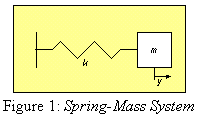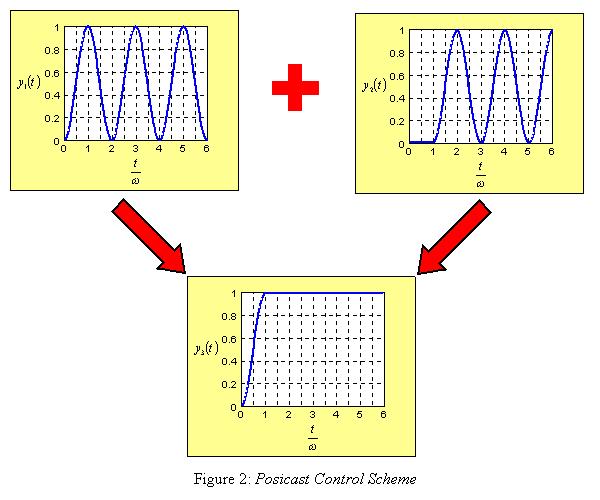Introduction to Input Prefiltering
Introduction
Attenuation of residual vibration of maneuvering structures is of interest in numerous applications such as hard disk drives, cranes, wafer scanning machines, space robots etc. Prefiltering the reference input to the underdamped system is a technique of achieving this objective. Motivated by the Posicast control technique, there have been numerous contributions related to the design of input prefilters which are robust to modeling uncertainties. In the following, the original Posicast technique is presented.
The term Posicast control stems from positive cast, based on the technique fishermen use to cast the fly. It is based on the idea that a step input is divided into two separate excitations. The goal is to apply these two steps so that at the end of the maneuver, the desired final value will be reached without further oscillatory movement. In the following, this technique will be illustrated on an undamped second order system. Smith's paper also addressed the design of posicast control sequences for damped second order systems.
A second order system subject to a step input exhibits a sinusoidal response
as shown in Figure 1.

The response due to an step of amplitude A applied at time T can be written as
 .
.
Now, the response due to two steps is calculated. For a maneuver of unit displacement, the amplitudes must sum up to one. The first step is applied at t=0. The second step will occur at t=T. Since the amplitudes are constrained, the first amplitude will be denoted as A. The second amplitude will then be given as 1-A. Assuming that vibration vanishes at the end of the maneuver, one can solve for the unknowns, as is shown in the following equation.
 .
.
The values given for A and T assure, that there is no residual vibration left at the end of the maneuver. The velocity, which is the time derivative of the displacement has gone back to zero, whereas the displacement has reached its desired final value of unity. The Posicast control scheme is shown in Figure 2.
 .
.
Java Applet for Simulation
Below is an Applet which illustrates the different control profiles. The spring stiffness can be chosen by using the rightmost drop-down list. The other drop-down list allows the selection of the control profile. The Start button starts the simulation. The Stop button can be used to stop the simulation at any point in time. Before selecting a new control profile or spring stiffness, the simulation must have stopped.
The outline of the Posicast technology can be found in the following paper:
- Smith, O. J. M. 1957. Posicast Control of Damped Oscillatory Systems. Proceedings of the IRE, 1249-1255.